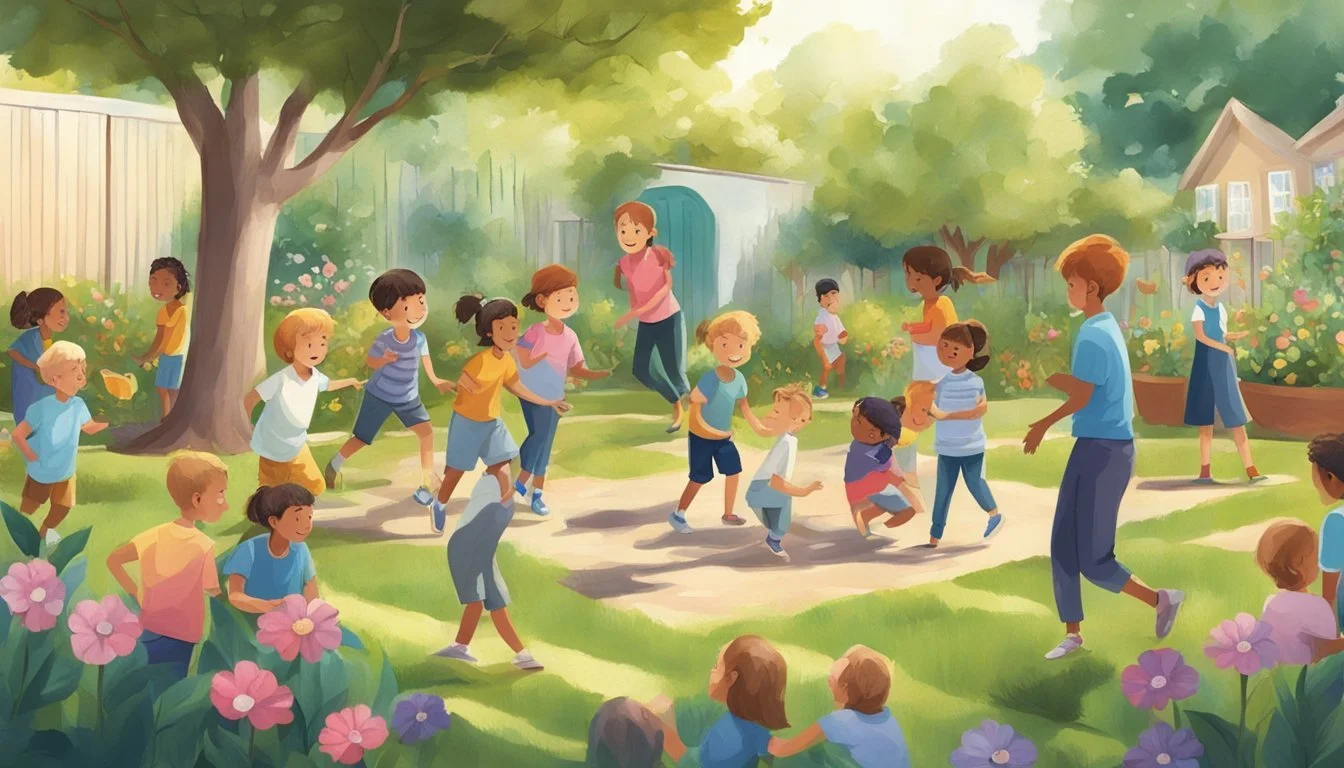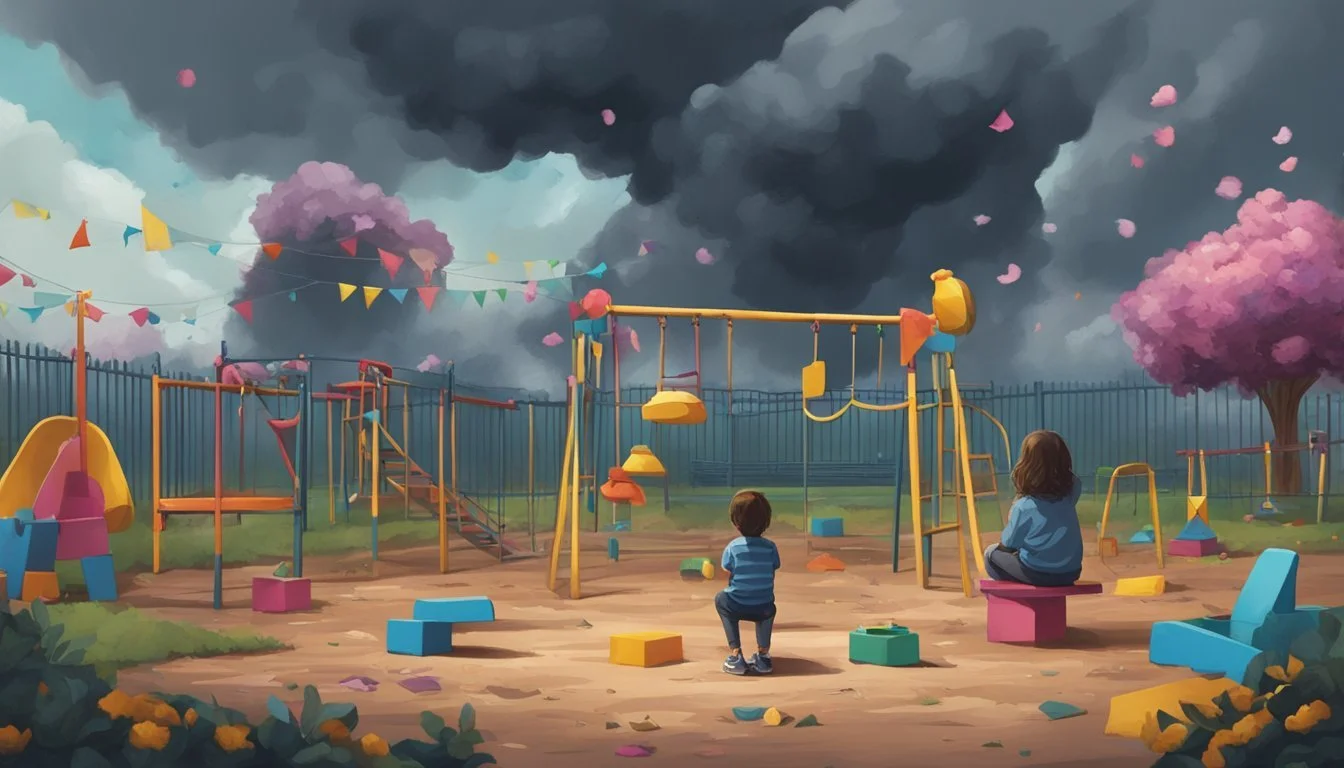Breaking the Cycle: Protecting Kids from Toxic Relationships
Toxic relationships can have profound effects on children, shaping their emotional development and future relationships. When parents are trapped in a cycle of negativity, conflict, and unhealthy behaviors, kids often bear the brunt of the consequences. They may experience stress, anxiety, and insecurity as they witness ongoing tension between their caregivers.
Recognizing the signs of a toxic relationship and taking steps to protect children is crucial for their well-being. Children exposed to toxic dynamics may develop low self-esteem, struggle with trust issues, or even replicate unhealthy patterns in their own relationships later in life. Parents must prioritize their children's emotional health and safety when navigating difficult relationship situations.
Leaving a toxic relationship with children involved requires careful planning and consideration. It's essential to create a support system, seek professional help if needed, and focus on maintaining stability for the kids throughout the transition. By addressing toxic relationships, parents can foster a healthier environment for their children to grow and thrive.
Understanding Toxic Relationships
Toxic relationships can severely damage emotional and psychological well-being. They are characterized by harmful patterns that erode trust, respect, and personal growth.
Defining a Toxic Relationship
A toxic relationship involves persistent negative interactions that harm those involved. It lacks mutual support and often leaves one or both parties feeling drained, anxious, or unhappy.
Key elements include:
Lack of respect for boundaries
Constant criticism or belittling
Unequal effort or commitment
Jealousy and possessiveness
Dishonesty or betrayal
These relationships can exist between romantic partners, friends, family members, or coworkers.
Signs of a Toxic Relationship
Recognizing toxic dynamics is crucial for protecting one's well-being. Common signs include:
Feeling consistently drained after interactions
Walking on eggshells to avoid conflicts
Experiencing frequent mood swings or anxiety
Neglecting personal needs or other relationships
Feeling unable to voice concerns or opinions
Physical symptoms like headaches, digestive issues, or sleep problems may also occur due to stress.
Differences Between Toxic and Abusive Relationships
While toxic relationships are harmful, abusive relationships pose immediate danger. Key distinctions:
Toxic Relationships Abusive Relationships Emotional manipulation Physical violence Passive-aggressive behavior Threats and intimidation Lack of support Control over finances or activities Criticism and blame Fear for personal safety
Abusive relationships often escalate over time and require immediate intervention for safety. Both types can cause long-term psychological damage, but abusive relationships present more immediate physical risks.
Effects on Children
Toxic relationships between parents can profoundly impact children's development and well-being. The negative dynamics children witness shape their emotional growth and understanding of relationships.
Emotional and Psychological Impact
Children exposed to toxic parental relationships often experience heightened anxiety and stress. They may develop low self-esteem and struggle with feelings of insecurity. These children are at higher risk for depression and other mental health issues.
Behavioral problems can emerge as children try to cope with the unstable home environment. Some may act out aggressively, while others become withdrawn.
Trust issues frequently arise, affecting their ability to form healthy relationships later in life. Many children blame themselves for parental conflicts, carrying unwarranted guilt.
Role Modeling and Intergenerational Transmission
Children learn relationship patterns by observing their parents. In toxic environments, they may internalize unhealthy communication styles and conflict resolution methods.
This can lead to difficulties in their own future relationships. They might struggle to recognize or maintain healthy boundaries with partners.
Some children may repeat toxic behaviors they witnessed, perpetuating a cycle of unhealthy relationships. Others may develop an aversion to intimate relationships altogether.
Breaking this cycle requires conscious effort and often professional support. Early intervention can help mitigate long-term effects and promote healthier relationship skills.
Navigating a Toxic Relationship
Toxic relationships with children involved require careful consideration of co-parenting dynamics and the decision to stay or leave. These situations demand thoughtful approaches to protect children's wellbeing while addressing personal needs.
Considering Co-Parenting Dynamics
Co-parenting in a toxic relationship presents unique challenges. Open communication becomes crucial, even when emotions run high. Parents must prioritize their children's needs above personal conflicts.
Establish clear boundaries and schedules for child-related interactions. This helps minimize tension and provides stability for the children. Consider using a neutral third party or mediator to facilitate discussions if direct communication proves difficult.
Document important decisions and agreements regarding the children. This creates a reference point and reduces misunderstandings. Seek professional help, such as family therapy, to develop healthy co-parenting strategies.
Focus on consistency in parenting approaches across both households. This promotes a sense of security for the children amidst the relationship turmoil.
Staying Versus Leaving
The decision to stay in or leave a toxic relationship is complex when children are involved. Evaluate the impact of the relationship on both personal wellbeing and the children's development.
Consider the following factors:
Safety: Prioritize physical and emotional safety for all family members.
Children's emotional health: Assess how the relationship affects the children's behavior and mental state.
Personal growth: Determine if staying hinders personal development and ability to parent effectively.
Support system: Identify available resources and support networks for potential transition.
Seek professional advice from therapists or counselors specializing in family dynamics. They can provide objective insights and coping strategies.
If staying, commit to personal growth and relationship improvement. Set clear boundaries and expectations for change. If leaving, develop a detailed exit plan that addresses childcare, finances, and living arrangements.
Strategies for Support and Personal Development
Recovery from a toxic relationship requires focused effort on healing and growth. Prioritizing self-care, building healthy connections, and seeking professional guidance are essential steps in this process.
Self-Care and Emotional Health
Developing a solid self-care routine is crucial for emotional healing. Regular exercise, proper nutrition, and adequate sleep form the foundation of physical and mental well-being. Mindfulness practices like meditation or yoga can help reduce stress and increase self-awareness.
Journaling provides an outlet for processing emotions and tracking personal progress. Setting aside time for enjoyable activities and hobbies nurtures a positive self-image and boosts confidence.
Learning to recognize and manage emotions effectively is key. This includes practicing self-compassion and challenging negative self-talk. Establishing healthy boundaries helps protect emotional energy and promotes self-respect.
Developing Healthy Relationships
Building a supportive network is vital for recovery. This involves reconnecting with trusted friends and family members who offer positive reinforcement and encouragement.
Joining support groups or community organizations provides opportunities to meet like-minded individuals. Engaging in group activities or volunteering can foster a sense of belonging and purpose.
Learning to identify red flags in relationships helps prevent future toxic situations. This includes recognizing manipulation tactics and understanding personal values and deal-breakers.
Practicing open communication and assertiveness skills strengthens interpersonal connections. Cultivating empathy and active listening abilities contributes to more fulfilling relationships.
Accessing Professional Help
Seeking therapy or counseling is often beneficial for processing trauma and developing coping strategies. A mental health professional can provide specialized techniques for managing anxiety, depression, or PTSD related to toxic relationships.
Cognitive-behavioral therapy (CBT) helps identify and change negative thought patterns. Other therapeutic approaches like EMDR may be helpful for trauma processing.
Support groups led by professionals offer a safe space to share experiences and learn from others. These groups can provide valuable insights and coping mechanisms.
Consulting with a life coach or career counselor can assist in setting and achieving personal and professional goals. This guidance supports overall growth and self-actualization.
Legal and Social Considerations
Legal protections and social support systems play crucial roles when addressing toxic relationships involving children. These mechanisms aim to safeguard the well-being of minors and provide resources for affected families.
Understanding Divorce and Separation
Divorce and separation processes involve complex legal procedures when children are involved. Courts prioritize the best interests of the child when making custody decisions. Factors considered include each parent's ability to provide a stable environment, emotional support, and financial resources.
Co-parenting arrangements are often established to ensure both parents maintain involvement in their children's lives. These agreements outline visitation schedules, decision-making responsibilities, and financial obligations.
Legal mediation can help parents negotiate terms amicably, reducing conflict and stress for children. In high-conflict situations, courts may appoint guardians ad litem to represent the child's interests.
Domestic Violence Laws and Resources
Domestic violence laws offer protection for victims and their children. Restraining orders can be obtained to keep abusive partners away from the family home and school premises.
Many jurisdictions have mandatory reporting laws for suspected child abuse or neglect. Teachers, healthcare providers, and other professionals are required to report concerns to child protective services.
Social services provide emergency shelters, counseling, and support groups for families escaping abusive situations. These resources offer safe havens and help victims rebuild their lives.
Legal aid organizations often provide free or low-cost representation for domestic violence survivors. This assistance can be crucial in navigating the legal system and securing protection for children.
Conclusion
Toxic relationships have profound impacts on children's emotional well-being and personal growth. Exposure to persistent negativity and harmful dynamics can shape a child's understanding of relationships for years to come.
Parents face difficult choices when navigating toxic partnerships. While some believe staying together benefits children, research suggests prolonged exposure to conflict and tension often does more harm than good.
Prioritizing emotional health - for both parents and children - is crucial. Seeking professional support, developing safety plans, and exploring options for separation can help break cycles of toxicity.
Ultimately, fostering healthy relationship models provides children with the best foundation for future emotional well-being and personal growth. This may involve difficult decisions, but can lead to more positive outcomes for all involved.




